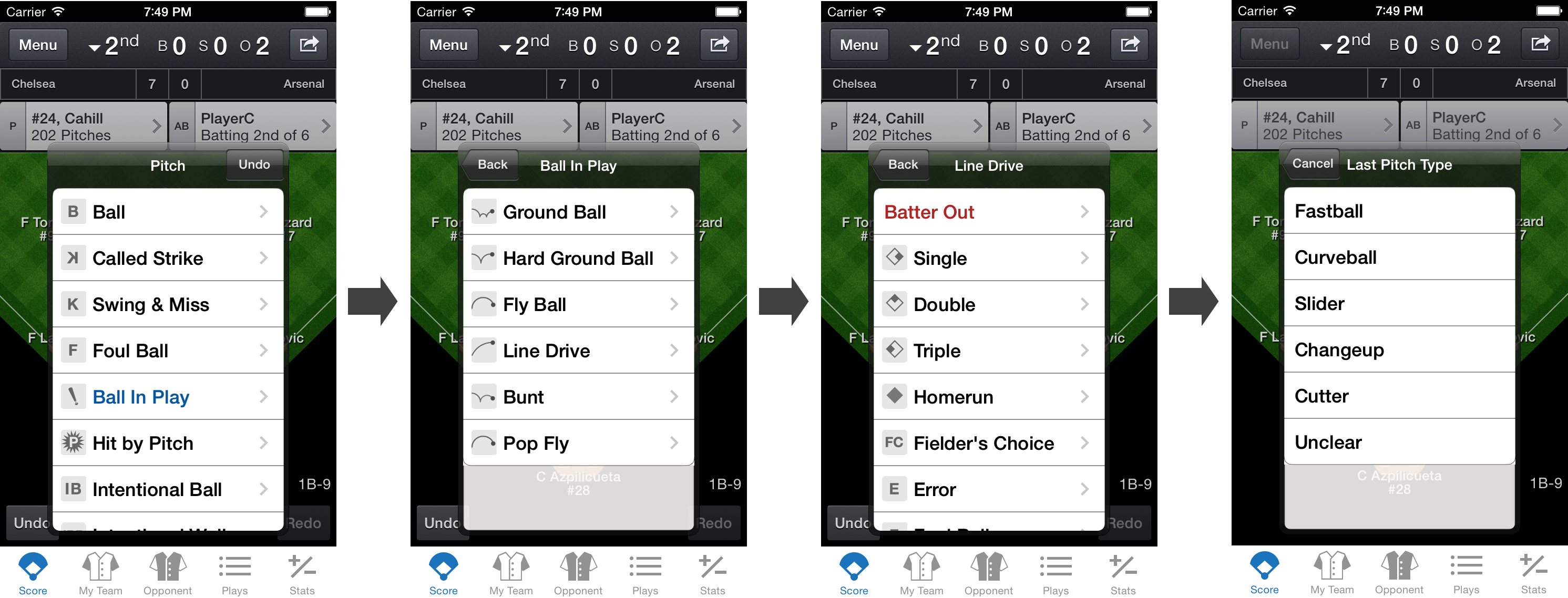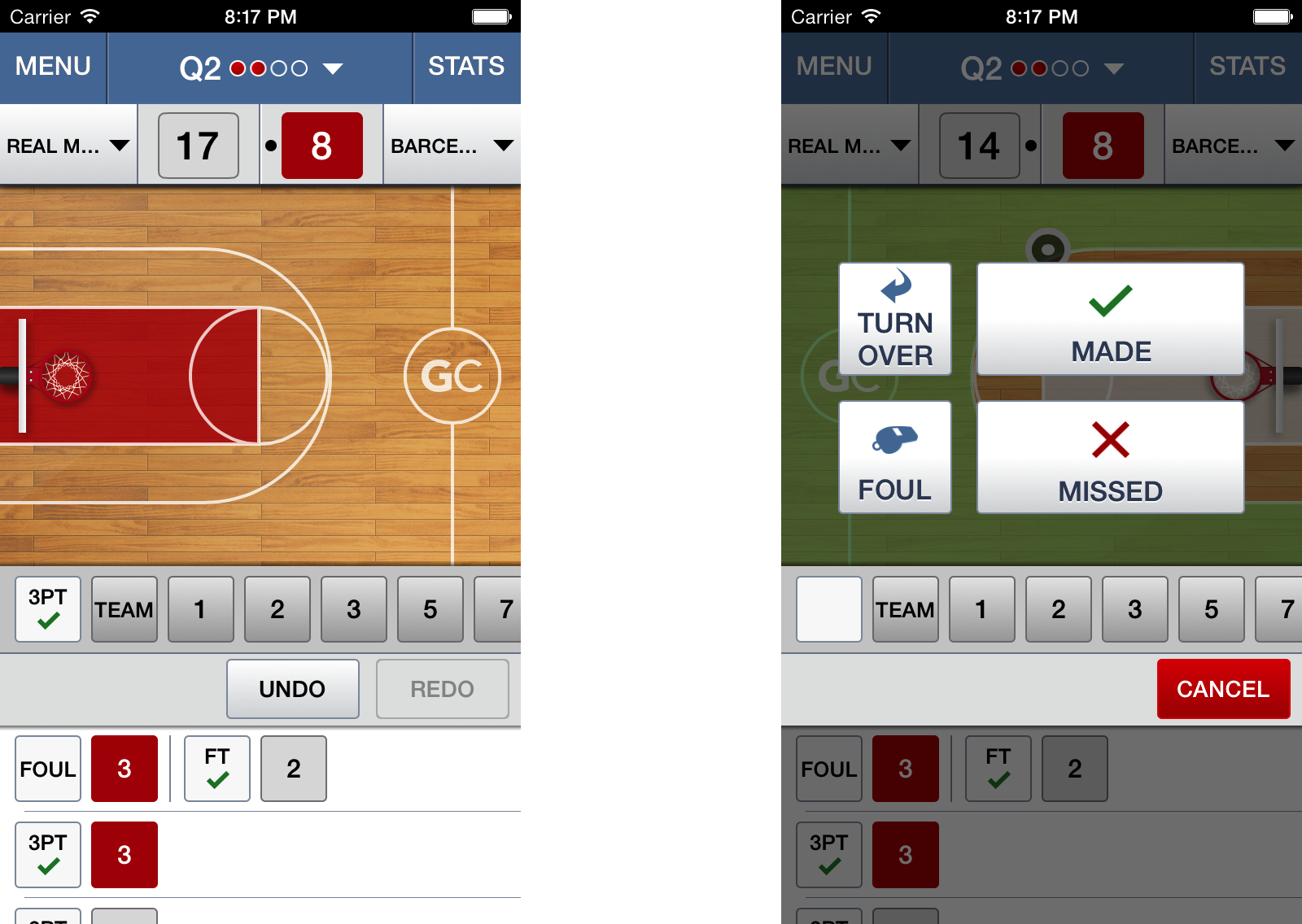The GameChanger mobile app currently provides scorekeeping for Baseball, Softball and Basketball, with more sports coming in the future. This presents an interesting challenge in terms of user experience. Aspects like pace and complexity vary so much from sport to sport, that the challenges a scorekeeper has to face are completely different. Taking these differences into account is essential when designing the app’s user interface. After years of interacting and getting feedback from coaches and scorekeepers, GameChanger has attempted to create a great product that works well for all the supported sports. This post briefly describes what GameChanger has done so far and some of the main challenges that need to be faced in the future to improve basketball scorekeeping.
Baseball and softball are very complex sports. The rules and the way the game is defined allow for a very large combination of events that can happen in a single play. Furthermore, coaches are interested in keeping very detailed and complex stats. What this means is that if a player hits a single, the app has to be able to record if the player hit a ground ball or a line drive, the pitch type, if there was a defensive error, if the ball was hit to the left, right or center field, and what player caught it. That’s a lot of things to ask for each batter.
Fortunately this complexity is mitigated by the pace of the game. Baseball and softball are not very fast sports, which means that there’s enough time between plays for scorekeepers to record all this information without falling behind in the game. For this reason, the focus when designing baseball and softball scorekeeping for the app was to make all possible flows clear and accessible to the user, even if that meant having to go through several screens to score each play.
 Baseball scorekeeping
Baseball scorekeeping
Basketball is almost the complete opposite to baseball and softball in terms of complexity and pace. When a player scores, the only information that needs to be recorded is where the shot was made and by whom. Some coaches might also be interested in recording assists. When compared to baseball, the flow that a scorekeeper has to go through is a lot shorter, and yet users often find it difficult to score a game without falling behind.
The reason is that basketball is a very fast sport. Many things can happen in a span of seconds and all of them need to be recorded in order to obtain accurate stats. Taking this into account, the GameChanger app attempts to make scoring a basketball play something very quick. Buttons are bigger and options are limited. Furthermore, the app allows the user to check and correct previous plays. What this means is that users know they can continue to pay attention to the game, and when they have a chance they can go back and assign a shot or a foul that was recorded earlier. This helps reducing the potential stress caused by failing to record some of the plays.
 Basketball scorekeeping
Basketball scorekeeping
Despite these efforts, basketball scorekeeping is still too hard for some users. Scoring plays needs to be even faster. This can be achieved by attempting to predict how users behave when using the app, and optimizing the user interface for that behavior. There are tools that can be used for that purpose such as CogTool, which allows the design and testing of different storyboards by predicting how skilled users would perform on them while doing different tasks.
Every change made to the current interface involves some risk, given that it’s hard to anticipate if users will understand the new interaction models. That is why using a rapid prototyping methodology becomes really important, as it provides early feedback from users. This involves iterating really quickly over some UI concepts, and testing them in office with actual users. After the tests are conducted and analyzed the team is able to decide what works and what doesn’t, and develop the next prototype for a new round of user testing. As an engineer, this has been a great opportunity for me to get direct contact with users and understand how they perceive and use the app, which I think is really important for being able to make a successful product that actually provides a great value to people who use it.
Understanding how the differences between sports affect what users need from the app, is very important for providing a successful experience. This will become harder and even more important in the future as new sports are introduced, because each one of them will bring new challenges that will need to be addressed. To do so successfully, it is very important to maintain a close relationship with coaches and scorekeepers, as GameChanger has done so far, since this is the foundation for understanding what they really need from the product and what the best user experience should be.